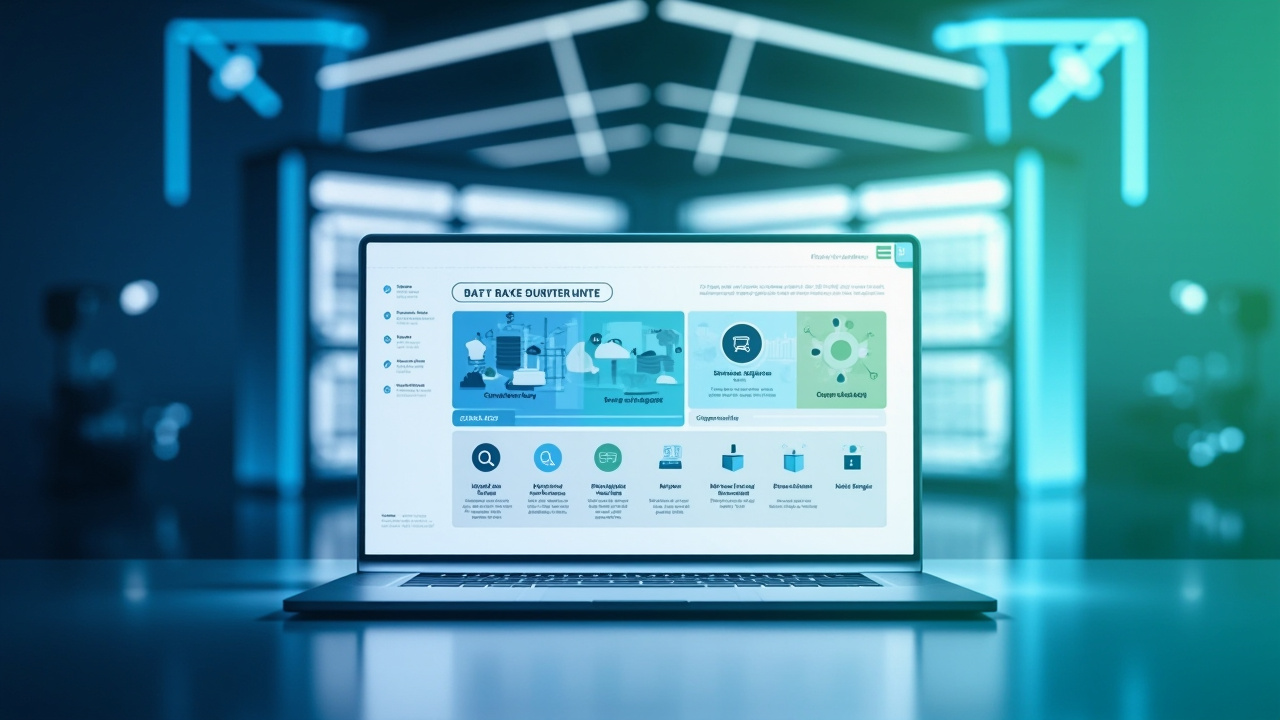In the ever-evolving realm of software development, the importance of robust software testing cannot be overstated. As technology advances at a breakneck pace, the methods we employ to ensure software reliability must evolve in tandem. Yet, the journey to achieving impeccable software quality is fraught with challenges. From the intricacies of test automation to the nuances of defect detection, each facet of testing demands meticulous attention. In this comprehensive exploration, we delve into the multifaceted world of software testing, examining its critical role in the software development lifecycle and unveiling innovative solutions that are transforming the industry.
Software testing has long been a cornerstone of software development, providing the assurance that applications function correctly and meet user expectations. However, traditional testing methods often fall short in addressing the complexities of modern software systems. With rapid development cycles and increasing software intricacy, the stakes have never been higher. The question then arises: How can we enhance our testing strategies to keep pace with this dynamic landscape?
Enter GenQE, a revolutionary AI-powered platform that is redefining the software testing paradigm. While not the sole focus of our discussion, GenQE serves as a prime example of how cutting-edge technology can revolutionize test automation and quality assurance. As we navigate through the intricacies of software testing, we will explore how AI-driven tools like GenQE are seamlessly integrating into existing workflows, offering unprecedented efficiency and accuracy.
The Evolution of Software Testing: From Manual to Automated

The evolution of software testing mirrors the broader evolution of software development. Initially, testing was a manual endeavor, heavily reliant on human testers to execute test cases and report defects. This approach, while effective for small-scale projects, quickly became untenable as software systems grew in complexity and scale.
The Limitations of Manual Testing
Manual testing is inherently labor-intensive and time-consuming, often leading to bottlenecks in the development process. Testers must meticulously design and execute test cases, a process fraught with the potential for human error. In a survey by Capgemini, 63% of organizations cited manual testing as a significant bottleneck in their software delivery process. Furthermore, as software updates become more frequent, the need for continuous testing intensifies, stretching manual testing resources thin.
“As software systems grow in complexity, the limitations of manual testing become glaringly apparent, necessitating a shift towards more efficient methodologies.”
Consider the case of a retail company launching a new e-commerce platform. The initial manual testing involved hundreds of hours of human effort, yet critical bugs still slipped through, leading to customer dissatisfaction and lost sales. This scenario exemplifies how manual testing can impede progress and highlight the need for more efficient solutions.
The Rise of Test Automation
In response to these challenges, test automation emerged as a game-changer. By automating repetitive testing tasks, teams can achieve faster turnaround times and more consistent results. Automated testing tools, such as Selenium and Appium, have become staples in the tester’s toolkit, enabling the execution of test scripts across a variety of environments.
However, simply deploying automated tools is not a panacea. Writing and maintaining test scripts require significant effort, particularly when application interfaces change. This is where platforms like GenQE come into play, offering self-healing automation capabilities that adapt test scripts to interface changes, thereby reducing maintenance overhead. For instance, a financial services firm integrated GenQE into its testing strategy and reported a 30% reduction in script maintenance costs within the first six months.
“Automation is not just about speed; it’s about enabling teams to focus on higher-order tasks that drive quality and innovation.”
The Anatomy of a Successful Testing Strategy

A successful testing strategy is not a one-size-fits-all proposition. It requires a thoughtful blend of methodologies, tools, and practices tailored to the specific needs of the project. At its core, a robust testing strategy is characterized by its ability to ensure comprehensive coverage, prioritize critical test cases, and adapt to changing requirements.
Comprehensive Test Coverage
Ensuring comprehensive test coverage is paramount to software quality. This entails testing across various platforms, devices, and scenarios to identify potential defects. A study by the National Institute of Standards and Technology (NIST) found that inadequate test coverage can lead to defects costing up to $60 billion annually in the U.S. alone.
GenQE excels in this arena by providing comprehensive test coverage across web, mobile, APIs, and cloud environments, ensuring that applications function seamlessly across diverse ecosystems. For example, a healthcare provider used GenQE to test its patient management system across multiple devices and achieved a defect reduction of 40%.
Prioritization of Test Cases
Not all test cases are created equal. Some are more critical than others, particularly those that impact core functionalities or user experience. Smart test execution, as facilitated by AI-driven platforms, allows teams to prioritize test cases based on risk analysis, ensuring that high-impact areas are tested first. This strategic approach optimizes resources and enhances defect detection efficiency.
“A strategic prioritization of test cases is essential to maximizing testing efficiency and ensuring that critical areas are rigorously evaluated.”
An automotive software company leveraged AI-driven prioritization to focus on safety-critical features, reducing the time to market for new updates by 20% while maintaining high safety standards.
Adapting to Change
The dynamic nature of software development necessitates a testing strategy that can adapt to changes swiftly. Whether it’s a shift in user requirements or an update in technology, the ability to pivot is crucial. Here, AI-powered tools like GenQE offer self-healing automation and AI-driven test generation, allowing teams to stay agile and responsive to change.
For example, a media company faced with frequent UI updates utilized GenQE’s adaptive testing capabilities, achieving a 50% reduction in test downtime and enabling more frequent releases.
“The ability to adapt quickly to change is not just a competitive advantage; it’s a necessity in today’s fast-paced development environment.”
Embracing AI in Software Testing: Opportunities and Challenges

Artificial intelligence is reshaping industries worldwide, and software testing is no exception. By leveraging AI, testing processes can become more intelligent, efficient, and insightful. However, the integration of AI into testing workflows is not without its challenges.
Opportunities Unlocked by AI
AI offers a plethora of opportunities for enhancing software testing. From AI-driven test generation to AI-powered defect detection, the potential for improvement is immense. GenQE, for instance, utilizes machine learning to analyze software requirements and user behaviors, generating test cases that are both comprehensive and efficient.
In a case study, a telecommunications company implemented AI-driven testing to simulate network loads and predict potential failures, resulting in a 25% increase in network reliability.
“AI is not just a tool for automation; it’s a catalyst for innovation that allows teams to predict and prevent issues before they arise.”
Navigating the Challenges
Despite its promise, AI integration presents challenges, particularly in terms of algorithm transparency and data integrity. Ensuring that AI-driven insights are accurate and reliable is critical to maintaining trust in automated testing processes. Furthermore, the implementation of AI tools requires a shift in mindset and skills, necessitating investment in training and development.
“While AI holds the potential to revolutionize software testing, its successful implementation requires careful consideration of both its opportunities and challenges.”
Organizations must also address concerns around data privacy and the ethical use of AI, ensuring that testing practices align with regulatory standards.
Real-World Applications
In practice, AI-driven testing tools have demonstrated significant benefits. For example, companies using AI-powered platforms have reported faster time-to-market, reduced costs, and improved defect detection rates. By automating tedious tasks, developers can focus on innovation, thereby enhancing overall productivity.
A notable example is a logistics company that used AI to optimize its routing algorithms, resulting in a 15% reduction in delivery times and a significant boost in customer satisfaction.
The Role of Continuous Integration and Continuous Deployment (CI/CD) in Testing

Continuous integration and continuous deployment (CI/CD) have become integral to modern software development, facilitating rapid and reliable code changes. The role of testing in CI/CD pipelines is crucial, ensuring that each code change is thoroughly vetted before reaching production.
Integrating Testing into CI/CD Pipelines
Integrating testing into CI/CD pipelines involves automating test execution as part of the build process. This ensures that defects are identified early, reducing the risk of faulty code reaching users. Platforms like GenQE seamlessly integrate with CI/CD tools such as Jenkins and GitHub Actions, enabling automated testing to become an integral part of the development pipeline.
For instance, a fintech startup integrated automated testing into its CI/CD pipeline using GenQE, resulting in a 50% reduction in deployment errors and a two-week acceleration in release cycles.
Benefits of CI/CD Testing
The benefits of CI/CD testing are manifold. By automating test execution, teams can achieve faster feedback loops, enabling quicker identification and resolution of defects. This not only improves software quality but also accelerates release cycles, allowing teams to deliver value to users more rapidly.
“Incorporating testing into CI/CD pipelines is not just a best practice; it’s a necessity for achieving rapid, reliable software delivery.”
A global retail chain adopted CI/CD testing to streamline its e-commerce platform updates, achieving a seamless user experience even during peak shopping seasons.
Overcoming CI/CD Testing Challenges
Despite its advantages, integrating testing into CI/CD pipelines presents challenges, particularly in managing test environments and ensuring test stability. Addressing these challenges requires a cohesive strategy that includes continuous monitoring, environment management, and test optimization.
A technology company overcame these challenges by implementing environment-as-code practices, enabling consistent and reliable testing environments across all stages of development.
Future Trends in Software Testing: What Lies Ahead?

As we look to the future, several trends are poised to shape the landscape of software testing. From the rise of AI and machine learning to the increasing importance of security testing, these trends offer a glimpse into the evolving priorities and methodologies in the industry.
The Rise of AI and Machine Learning
AI and machine learning are set to play an even larger role in software testing, enabling more intelligent test case generation, execution, and analysis. Tools like GenQE are at the forefront of this trend, providing AI-driven solutions that enhance testing efficiency and accuracy.
In a forward-thinking initiative, a leading tech company is using AI to develop predictive analytics for its testing processes, aiming to reduce defect rates by proactively identifying potential failure points.
The Growing Importance of Security Testing
As cyber threats become more sophisticated, the need for robust security testing has never been greater. Ensuring that applications are secure from vulnerabilities is crucial to protecting user data and maintaining trust. This trend underscores the importance of integrating security testing into the overall testing strategy.
“The future of software testing is not just about finding defects; it’s about ensuring that software is secure, reliable, and resilient in the face of evolving challenges.”
For example, a financial institution implemented AI-driven security testing to detect and mitigate vulnerabilities in real-time, significantly enhancing its cybersecurity posture.
The Shift towards Continuous Testing
Continuous testing, the practice of testing software at every stage of development, is becoming increasingly vital. By embedding testing throughout the development process, teams can identify and address issues earlier, improving quality and reducing time-to-market.
A case study of a healthcare application demonstrated how continuous testing reduced the time required for regulatory compliance by 30%, allowing for faster patient access to new features.
“Continuous testing is not just a trend; it’s a fundamental shift towards a more proactive approach to software quality.”
Conclusion: Navigating the Path to Quality Assurance Excellence

The world of software testing is dynamic and ever-changing, shaped by technological advancements and evolving user expectations. To navigate this landscape successfully, organizations must adopt innovative tools and strategies that enhance testing efficiency and effectiveness.
As we’ve explored, AI-driven platforms like GenQE offer transformative solutions that address the challenges of traditional testing methods. By integrating such tools into their workflows, teams can achieve faster, more accurate testing processes that enhance overall software quality.
Ultimately, the path to quality assurance excellence lies in embracing innovation, fostering adaptability, and maintaining a steadfast commitment to delivering reliable, high-quality software. As you embark on this journey, consider exploring the tools and methodologies discussed here to elevate your testing efforts and ensure success in the ever-evolving world of software development.
“Innovation in software testing is not just about keeping up; it’s about setting the standard for excellence in quality assurance.”
By engaging with the innovative solutions and strategies discussed in this article, you can position your organization at the forefront of the software testing landscape. Explore how GenQE and other cutting-edge tools can enhance your testing efforts, driving quality and efficiency in your development processes.
Discover More Innovative Solutions
Want to learn more about the tools and technologies discussed in this article? Explore how these innovations can be tailored to your specific needs and workflow requirements.
Our team of experts is available to answer your questions and provide personalized insights into how modern solutions like GenQE can address your specific challenges.
If the link above does not work, please visit: https://calendly.com/dm-csimplifyit/30min?month=2025-05